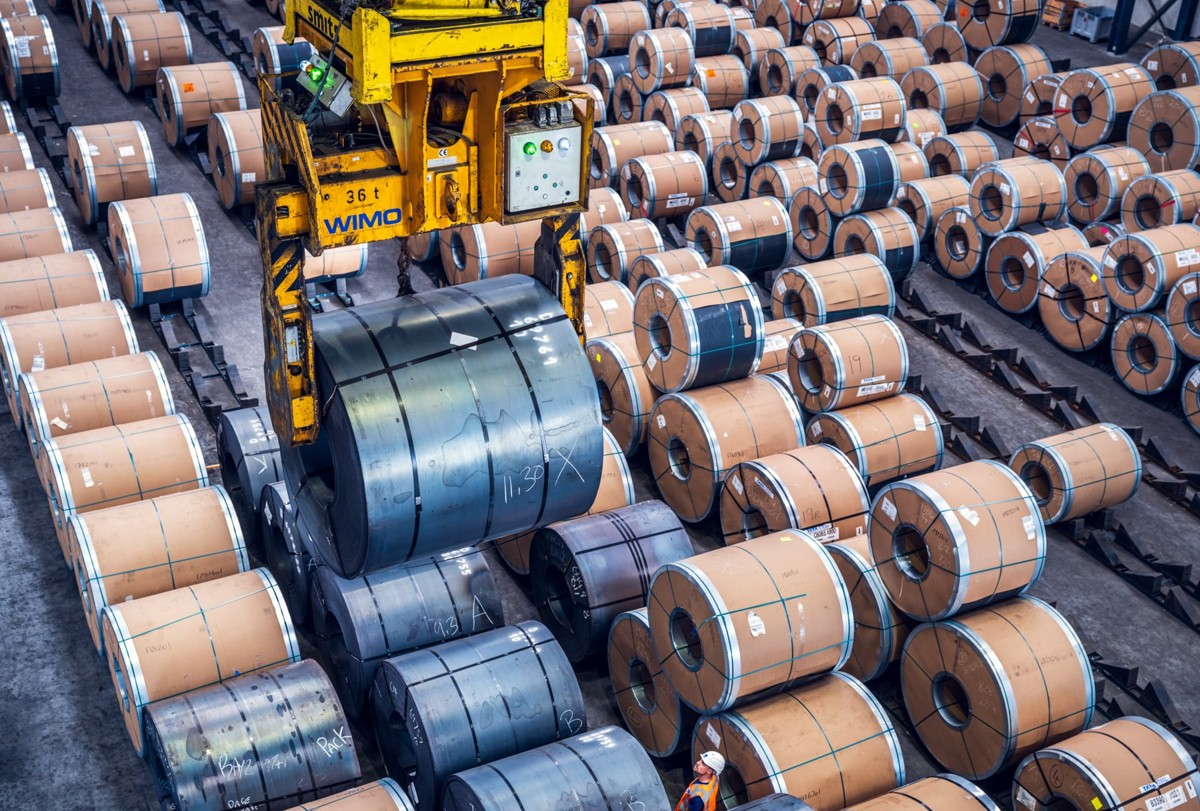Market Segment

April 18, 2017
HARDI Wholesalers Report "Good" Demand, Worried About Galvanized Pricing
Written by Sandy Williams
Steel Market Update participates in a monthly steel conference call hosted by HARDI (Heating, Air-conditioning, and Refrigeration Distributors International) for their members. The HARDI conference call is dedicated to a better understanding of the galvanized steel market. The participants are wholesalers, service centers and manufacturing companies who either buy or sell galvanized sheet products used in the HVAC industry. Demand and inventory dominated the discussion earlier today and, HARDI members were uncertain as to where steel prices are headed in the coming weeks.
Since the last call in March there have been no further increases in steel prices from the steel mills. Scrap fell as predicted but the drop was less than expected. Zinc prices are still elevated at $1.13 per pound but are less than its peak of approximately $1.34 per pound. Galvanized prices were reported to be lower than what was discussed one month ago. There was much discussion about pricing with the consensus of those who spoke during the conference call believing the market has “peaked” but there was no consensus as to how far prices could drop or, even if they would drop from today’s levels.
Said one wholesaler, “Demand is high but there is too much supply right now. Since mill prices have leveled out, it seems service centers are willing to take really skinny margins just to keep the volume up. A kind of wait and see game until the mills either go up or go down.”
![]() A large galvanized distributor told the group, “There doesn’t appear that there is anything out there that is going to cause a massive correction [in galvanized steel prices].”
A large galvanized distributor told the group, “There doesn’t appear that there is anything out there that is going to cause a massive correction [in galvanized steel prices].”
Most callers reported average inventory levels and noted that there is no shortage of material to be had. MSCI is reporting carbon flat rolled inventories are at 1.8 months with galvanized being quoted by one service center on the call as being 1.65 months, a number that SMU publisher John Packard challenged. “I have a hard time believing that the service center inventories on flat rolled are so low in light of the capacity utilization rates that mills are running and in light of the number of imports coming in on flat rolled products,” said Packard.
A second service center commented, “The position we try to take here is to carry higher than what MSCI is reporting, as far as the 1.8 or around 1.6 on galvanized. We carry more than that right now but we are not in position where we feel we are over inventory by any means–just because we want to supply our customers that are out there.”
A wholesaler located in the Midwest reported, “We see prices decreasing in the future. As such we are reducing our inventory position. We are not fat at the moment, we are at an average inventory position and we are looking to decrease that just by decreasing what we buy month to month.”
A Canadian HVAC manufacturing company said things “seem pretty strong here in Canada. From an inventory standpoint I think we are quite average from where we were last year. Hard to say what that means in terms of our strategy going forward, but it seems we are hitting our sales numbers and inventory is where it typically is.”
Demand was generally strong with competition tough in some areas. “There seems to be a lot of work going on it is just a matter if we are quoting against 5-6 service centers, we are not getting those very often,” said one east coast wholesaler.
Another Mid-Atlantic wholesaler said, “Demand has been pretty good although we are starting to see that wane as the price momentum kind of chills off a little bit.”
This same caller added that the non-traditional service centers continue to be “ultra-aggressive” in competing for orders. “The traditional service centers that compete in our space are highly aggressive and completely disconnected from what their replacement cost is or should be in the marketplace.”
Another east coast caller lamented, “I find that demand is softer here and that pricing has eroded and probably in last two weeks I only get two out of ten orders I quote. It is horrendous.”
More galvanized steel is being introduced to the market with the entrance of Big River Steel and the seasonal slowdown of the automotive industry which is a big consumer of galvanized. Imports of galvanized continue be a problem with new players coming from Vietnam, Thailand, UAE and parts of Africa. One wholesaler pointed to the Florida market as becoming very competitive due to a higher amount of foreign steel being available there.
One large galvanized service center noted that this is the first full steel cycle without competition from Chinese steel. China was essentially removed from the market as a result of successful trade cases last year. “We are really in a cycle where we are not going to see a flood of 800,000 thousand tons of Chinese steel in our ports.”
None of the wholesalers who spoke on the call reported inventories below two months and none seemed worried about their ability to get steel on a timely basis.







